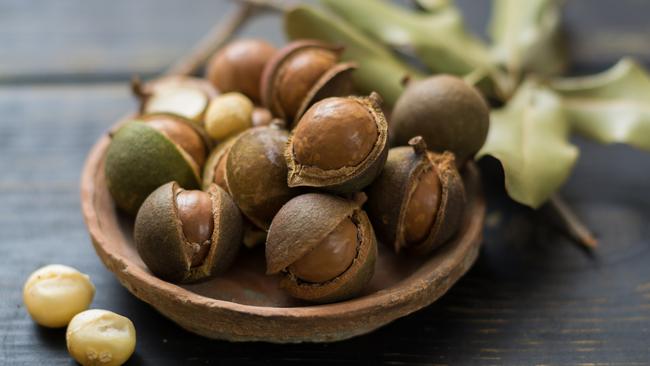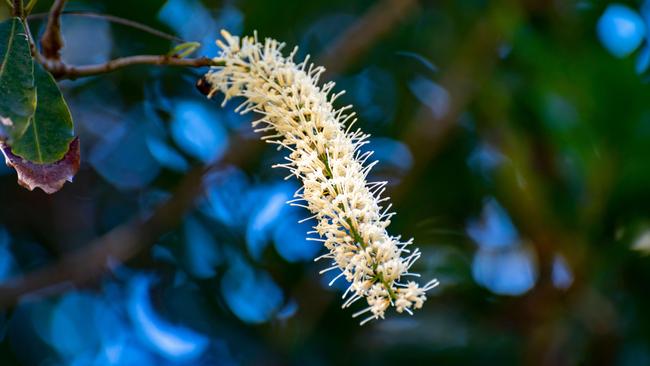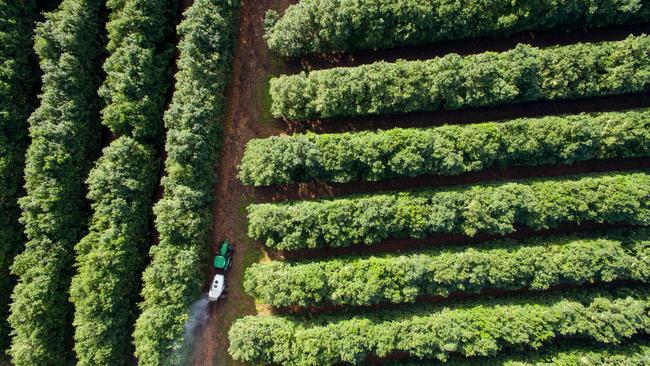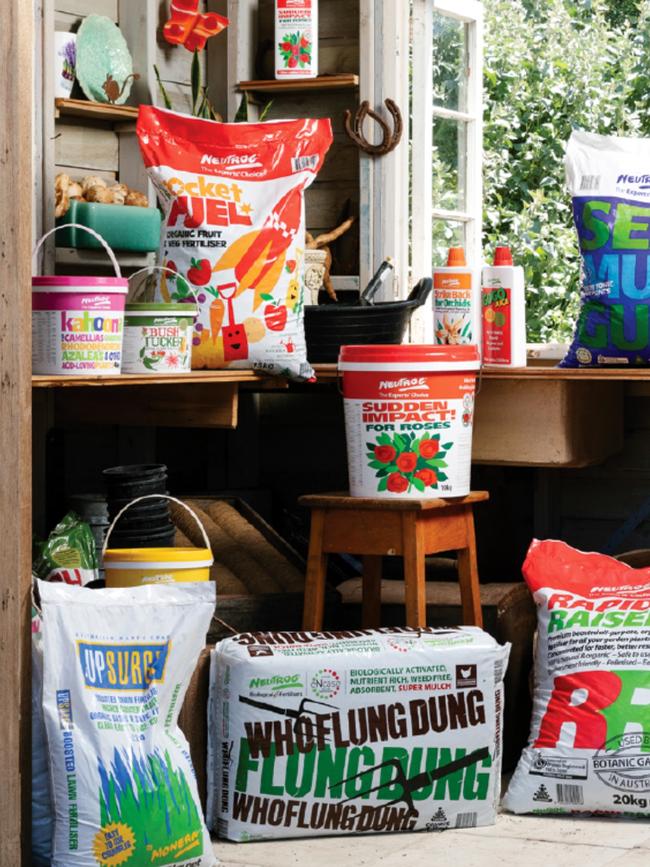Macadamias: Australia’s gift to the world
We are now one of the world’s largest producers of macadamias, with about 800 growers farming 36,000ha and expanding rapidly.

Macadamia nuts are a rare example of an Australian plant becoming an international food. Although it was Hawaii that commercialised macadamias from the 1930s, we are now one of the world’s largest producers with about 800 growers farming 36,000ha in 2020 and expanding rapidly. The rich and crunchy kernels (inside notoriously hard shells) are packed with fibre, good fats, micronutrients and antioxidants.
There are four species native to the sub-tropical rainforests of our east coast, of which two are grown commercially. The bumpy-shelled bush nut, Macadamia tetraphylla, has pink flowers and pinkish new leaves but the main species grown is the smooth-shelled Queensland or bauple nut, M. integrifolia, with cream flowers. M. ternifolia and the endangered M. jansenii both have bitter nuts.

The trees bear long strings of flowers in August and September, producing pollen and nectar. Honeybees, native bees and other insects are pollinators but you’ll get heavier crops by planting two different varieties. Macadamia trees take up to five years to bear their first nuts but can remain productive for more than 100 years. The nuts fall to the ground when ripe, peaking in May and June. The green outer husks split on the ground – these can be used as mulch or composted. After collecting, the nuts should be dried in a warm spot for a few weeks so the kernels shrink away from the inside of the shell ready to be cracked.
In commercial nut processing, after drying and cracking the kernels are sorted by colour, the darker ones going to make macadamia oil and the premium cream ones reserved for eating. The shells, once a waste product, now make biochar, carbon filters, medical grade charcoal to counteract poisonings and industrial nanopowders; they’re also used as fuel to run the processing plants.

Macadamias grow best in frost-free regions with high summer rainfall and soils enriched with organic matter. Although they can reach 20m high and 10m wide, they’re very adaptable to pruning, done after harvest and before flowering. When buying a young tree, choose a named variety that is suited to your location. It will be grafted onto a disease-resistant rootstock and should start to bear nuts much sooner than seed-grown trees. Smaller varieties are available, but dwarf varieties produce smaller nuts.
The macadamia industry, through the Australian Macadamia Society, is investing in a breeding program to develop new cultivars with improved attributes for growers and consumers.
Q&A
Are fresh coffee grounds OK in the compost? Julie, Tasmania
Spent coffee grounds are good to add to compost in moderate amounts, mixed with other ingredients. They have some nitrogen plus trace amounts of phosphorus, potassium, magnesium and copper. They’re slightly acidic but unlikely to affect soil pH.
We’ve built a cover for our deck. What shrubs will tolerate shade? Heather Beattie, Sydney
Few flowering shrubs perform well in heavy shade. Winter flowering camellias (C. japonica) might bloom; several smaller varieties are great for pots. Peace lilies (Spathiphyllum) might flower, as should clivias. Palms, various Ficus, Calathea and Dieffenbachia would do well. Coloured leaved plants include Stromanthe, many cordylines and gold-dust plant (Aucuba japonica ‘Variegata’). Hose the leaves regularly to wash them clean.
Can I move a 2m-tall port wine magnolia to my new property? Allison Crawley, Adelaide
Evergreen magnolias such as your Magnolia figo can be transplanted. Autumn is the best time to move all evergreen shrubs but in Adelaide winter is fine. Prune foliage by a third to a half and take as much rootball as possible; apply Seasol regularly.

Send your questions to: helenyoungtwig@gmail.com or Helen Young, PO Box 3098, Willoughby North, NSW 2068. Website: helenyoung.com.au. The best question for June wins $150 worth of products from Neutrog to nourish your garden. May’s winner is Pam McMullen of Doonan for her question about cat-friendly houseplants.



